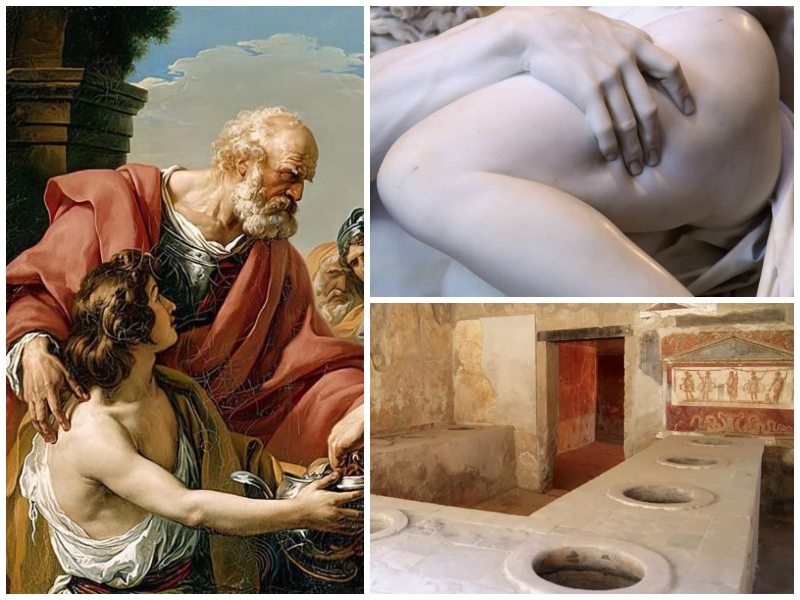
Rome, the capital of the ancient Roman Empire, has long been considered one of the world’s most magnificent cities. With its rich history, stunning architecture, and breathtaking monuments, it is no wonder that millions of tourists flock to the city every year. But what was life really like in Rome? Beyond the grandeur and glory, what were the daily realities for its citizens?
In this article, we take a closer look at what life in Rome was truly like, delving into the hidden corners of history to uncover the good, the bad, and the ugly. Get ready to discover the real Rome as we journey through time to unravel its fascinating story.
Exploding toilets in communal bathrooms were seemingly common in Roman times
The most well-known of their bathroom activities was still the fact that they used communal toilets for personal use. They could be found all over Rome and had lines of toilets next to each other. Everything was then flushed down the drains.

The sewer system was not the same as it is now. It wasn’t long before hazardous gasses like methane began to build up in the sewers. They were known to cause explosions or cause toilets to burst into flames. Although there have been no reported cases of people losing their lives due to toilets, it is possible.
Roman baths included just about everything someone could need
Over the years, archeologists have discovered amazing things that help to tell the story of life in Ancient Rome. Roman baths are one of many discoveries. But what was their purpose? They were much more than a place for communal bathing with the rest of the city.

Because they covered areas as small as little towns, the baths had all the necessary amenities. The largest was the Baths of Caracalla. The baths could accommodate 1,600 people and included a library, gym, and two fountains measuring 19 feet. The baths also featured a gentleman’s residence, marble statues, artwork, and mosaics.
Emperors would show up as celebrities in Roman baths
It may not be surprising that all sorts of diseases were easily contracted by Roman baths. However, this didn’t stop the emperors from going to the baths, where they were treated like celebrities. It was also a chance to meet people and make yourself known.

The emperors could hire a team of people to take care of all the work for them. They carried their robes and rubbed olive oil on their skin. Then, they would use a strigil tool to scrape it off.
Chariot racing was quickly Rome’s most popular sport
Julius Caesar was not the only one to love chariot racing. He was responsible for expanding Circus Maximus, Rome’s chariot racing ring, to accommodate 150,000 to 200,000. Chariot racing was the most popular sport in Rome. Each race consisted of four teams.

Each team had three racers, each with four horses pulling a chariot. Although they occasionally had two drivers, the most impressive sight was the ten-horse chariot which made frequent appearances. The best seats were in the corners, which often saw racers thrown from their chariots.
Being a chariot racer could earn someone big bucks
Did you know that most chariot racers were slaves? They didn’t want to quit the sport, however. It was actually the exact opposite. Each racer would receive a share of winnings if they were part of the victorious team. But that wasn’t all. It turned out that chariot racing betting was also very popular in Rome.
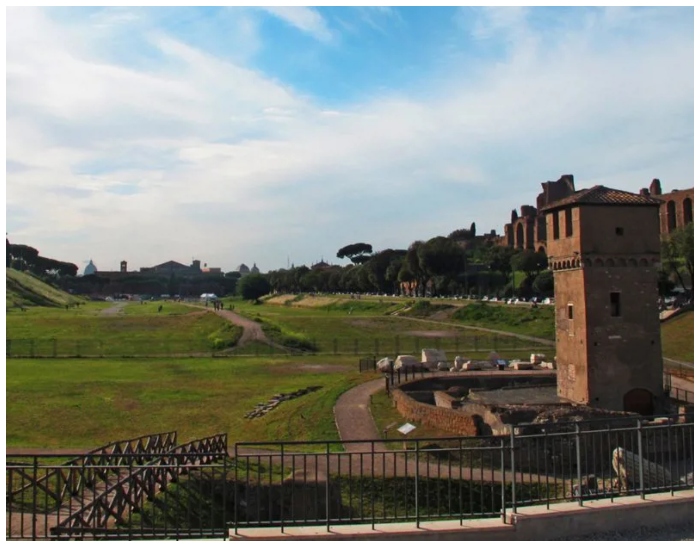
Racers would often place bets and walk away with big bucks at the end. What’s the twist? The best teams, the red and white ones, were the most successful and, therefore, could afford the best drivers.
Ancient Romans were known to love their dogs like family
Dogs have been human’s best friends for a long time. But that doesn’t mean we all know how long these four-legged companions have been part of our lives. The Molossus, a large breed that could be related to the Mastiff, was loved by ancient Romans. It was also imported as a lap dog called Melitans.
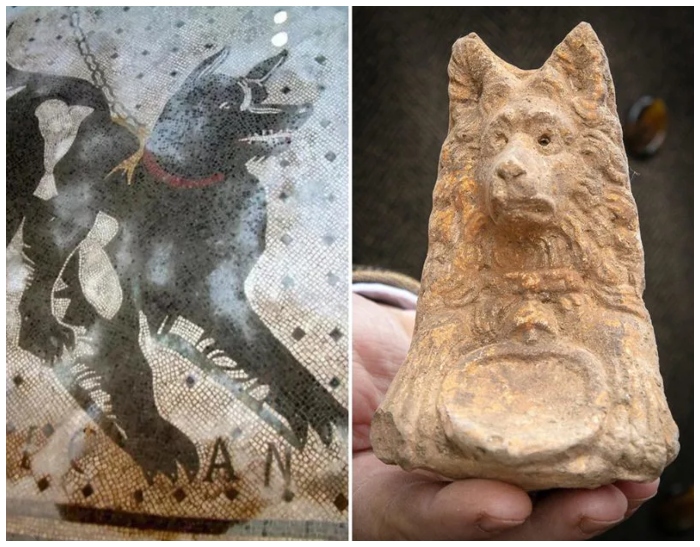
Dogs had collars and leashes. Mosaics and paintings warning people to beware of dogs were commonplaces in the city. The Zoninus collar is the most well-known collar. It reads, “I have run away,” and anyone who “receives a gold coin” it will return to Zoninus. However, people aren’t sure if it belongs to a dog or a slave.
People living in Rome believed in magic and witchcraft
It is unsurprising that witchcraft has been a dominant force in Europe for centuries. The fact that Romans believed in the supernatural was also a factor. Many spells can be used to affect daily life. One was to keep people still. It involved three incense sticks placed at the mousehole’s entrance before attaching an enchanted thread of dark lead.

The next step was to place seven beans in the mouth of someone, then sew a fish’s head with a bronze needle and roast it. To make the spell work, the spellcaster needed to eat the fish head and drink an adult beverage. Many spells could be used against your enemies. Many of them used magical gemstones.
Temples could also be used as banks for Ancient Romans
Rome was all about having fun and making money. What could someone do with all their wealth? They could visit the temple to keep their finances in order since temples were used throughout Ancient Rome as banks. The basements were used as vaults and were closely guarded at all hours.
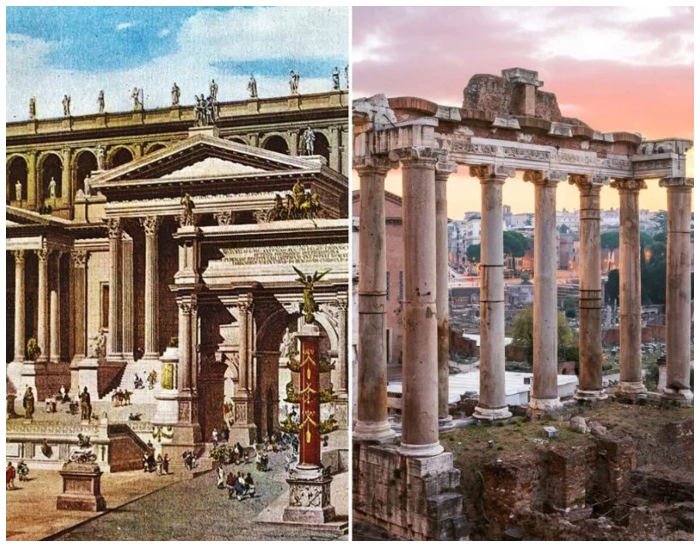
The priest was responsible for tracking the amount of money that had been deposited at the bank or loaned to others. It was good to deposit money in multiple temples, even though it was safe. This was because fires were very common and could mean someone’s money would be lost forever.
Men had all the power while women had none in Rome
Do you want to see how Rome’s family hierarchy worked? It appears that men possessed all power, while women had no. Men could arrange marriages, divorce their wives, and reject newborns if necessary.

Women were also expected to marry men and have kids. If they didn’t, they were accused of being the problem. They also had to look after the house and work as servers, nurses, or crafters. They did not get a first name and instead used the feminine interpretation of their fathers’ names.
Being poor in Ancient Rome meant you would live on a high rise
Rome was populated mainly by those at the lower end of the income scale. They all needed somewhere to call home, as they were part of the first city with over 1,000,000 inhabitants. Solution? High rises. These apartment buildings were known as the insula, meaning “island,” and could reach 100 feet in height.
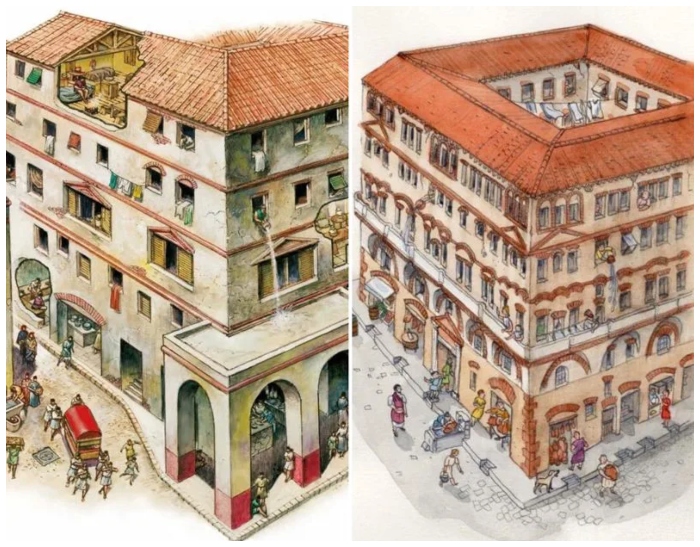
The worst apartments were on the highest floors. Because they were dark and cramped, it was likely that someone would die in a fire. The bottom floors were reserved for people with more money. Many rented rooms to multiple roommates. However, no apartment came with running water or insulation.
It was common for apartment buildings to burn down in Ancient Rome
However, Ancient Rome did not have the same access to materials as we do today. Their insula was made of wood and mud and highly flammable. Even if the buildings didn’t burn, it was common for them to collapse, especially if they were built cheaply.
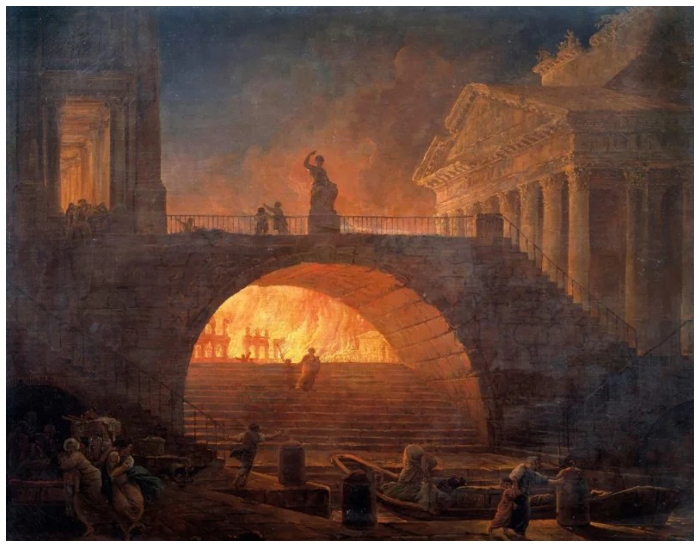
Fires could be contained by destroying nearby buildings and firefighters, called Vigiles, working with water buckets to extinguish flames. Romans used hot coals to cook food in the interior, but that didn’t help the fires. The Great Fire of Rome burned six days, was rekindled for three more days, and destroyed two-thirds of Rome.
Fire insurance – and insurance fraud – has seemingly been around since Roman times
It is not surprising that Romans began to invest in fire insurance, considering the frequency of fires throughout Ancient Rome. It was still a luxury option that was only available to those who could afford it. This also means that insurance fraud could have been a problem for Romans.

People would often invest in houses and have their contents insured against fire. Then they would mysteriously go up in flames. People were often given more money to cover their homes and other items than they were worth. They quickly realized that the fire may not have been as innocent after all.
Ancient Roman Beauty Routines for Women
Women in ancient Rome strived for beauty standards that signified status and class, focusing on a pale, unblemished complexion with a subtle blush. Achieving this look required an array of natural cosmetics, such as foundations made from white lead and blush from various organic and inorganic materials.

Elaborate hairstyles embellished with ropes or golden threads displayed wealth and artistry. Icons like Poppaea Sabina exemplified these ideals. These beauty rituals went beyond vanity, embodying the wealth and societal roles of Roman women, and were integral to their identity in the public and private spheres.
Life of an average roman woman
In ancient Rome, the average woman was primarily a matron, managing household affairs and raising children. Society expected her to be modest and to adopt a feminine version of her father’s family name. Education was limited to basics like reading, writing, and some math to prepare her for household management and companionship with her husband. Higher learning was discouraged and often associated with negative traits.

Ancient Meals and Methods
Ancient Roman cuisine was a mix of cereals, vegetables, fruits, and legumes tailored to societal status. Commoners mainly consumed staples like bread, beans, lentils, peas, and vegetables. Meat, a luxury for the wealthy, included hares, snails, and birds, with beef less favored. Seafood was diverse, reflecting Rome’s expansion and trade. Cooking primarily involved boiling and frying, particularly in olive oil, with sauces and spices enhancing flavors. Garum, a fermented fish sauce, was particularly popular.

Emerpors were fed grapes but at what cost
Roman emperors led lives marked by extravagance, luxury, and often bizarre behaviors. They rose to power through various means, such as conquest, political expertise, or military support, and once they were in power, they generally ruled for life. The emperors had no term limits or retirement plans, and their tenure often ended with their death, frequently through assassination or forced suicide.

Sexual Exploitation of Slaves
In ancient Rome, slaves endured a harsh reality of sexual exploitation, with no legal rights over their own bodies. Masters frequently exercised sexual dominance over their slaves, a practice ingrained in Roman societal norms. Female slaves were particularly vulnerable, often subjected to abuse or forced into prostitution.

The offspring of such unions were born into slavery, further entrenching the cycle of exploitation. While instances of genuine affection did occur, they were rare exceptions. This grim aspect of Roman slavery underscores the deep-seated inequalities and the brutal personal experiences of slaves in their daily lives.
Empowering for men
In ancient Rome, sexual norms and behaviors were markedly different from modern Western standards. The society, deeply patriarchal, established masculinity as a symbol of governance and control, extending to sexual relations. Men’s sexual conduct, whether with women or lower-status males, was not morally scrutinized as long as it didn’t show weakness or infringe on the rights of peers. Women were expected to embody pudicitia, a complex ideal involving modesty and attractiveness. Prostitution was legal and widespread, and erotic art was a common feature in respectable homes. Homosexual relations, particularly involving a freeborn Roman youth, were acceptable within certain societal frameworks.

Losing an apartment meant Ancient Romans were simply out of luck
For those at the lower end of income, it seems that life in Rome was not all it appeared to be. Because banks were primarily reserved for the wealthy, fire insurance was something many couldn’t afford. Problem? This meant that someone’s entire life was in their home and could disappear in a split second.

The possibility of fire consuming everything could cause irreparable damage. There is no way to recover them without insurance. But here’s the twist: their only hope was to find relatives or wealthy neighbors who would let them stay temporarily while they got back on their feet.
Life of a female slave
In ancient Rome, female slaves faced a particularly harrowing existence marked by exploitation and a lack of autonomy. Beyond the general hardships endured by all slaves, such as grueling labor and harsh punishments, women in bondage were often subjected to additional layers of abuse and degradation. Many were bought specifically for their masters’ physical gratification, a tragic exploitation that stripped them of their autonomy and consent. This coital slavery wasn’t just a private affair; it extended to public brothels, where countless female slaves were forced to service numerous clients daily.

In addition to physical exploitation, female slaves also performed various roles in Roman households and society. They worked as maids, cooks, and nurses, often facing the dual burden of labor and intimate physical abuse. Their artistic talents, whether in music, dance, or other forms of entertainment, were exploited for the pleasure of their masters, turning their skills into instruments of their subjugation.
Misconceptions of Roman Intimacy
Contrary to popular belief, ancient Rome was not a hotbed of unrestrained sexual activities but rather a society marked by stringent prudish norms. Public displays of affection were frowned upon and grounds for social and political repercussions. A notable instance involved a senator who faced severe backlash and was expelled from the Senate simply for kissing his wife in public.

The Romans’ approach to intimacy was equally conservative. Activities typically associated with the night were strictly confined to darkness, with no candles or lamps to shed light on the proceedings. Women were expected to adhere to modesty standards, with full undress considered highly immoral. This reserved attitude towards sexual matters persisted until the Romans began assimilating aspects of Greek culture, which gradually led to a shift in their sexual mores and practices.
Public sanitation
In ancient Rome, the xylospongium, also known as tersorium, played a crucial role in public sanitation. This ingenious yet simple device, essentially a sponge mounted on a stick, was the Roman equivalent of toilet paper. Used commonly in communal latrines, the xylospongium was a practical tool and a symbol of Roman engineering and communal living.

After use, it was washed in a channel of running water or a vinegar solution for hygiene. This communal approach to personal cleanliness reflects the Romans’ advanced thinking in public health and sanitation, a testament to their societal organization and emphasis on cleanliness.
Rome was home to funeral clubs that came with plenty of perks
Many of us were members of one or more clubs in our lifetimes. What about a funeral club, you ask? They may not be as common nowadays, but they were popular in Ancient Rome. You also get many perks. The initial fee was only $50, then a monthly charge.

They had access to monthly events and meetings. It also meant that the club would cover the funeral costs if the member was current with their dues. The funeral club would also pay for returning a person’s body to Rome if they died elsewhere.
The Harsh Reality of Slave Trade in Ancient Rome
In ancient Rome, the slave trade was a grim yet pivotal aspect of its economy and social structure. Slaves from diverse empire regions were displayed in markets like commodities. Stripped of dignity and clothes, they stood exposed for buyers to scrutinize their health and strength. This dehumanizing process often involved revealing any illnesses or escape risks.

The value of a slave varied based on their condition and skills; educated slaves could fetch higher prices for roles like teaching, while strong men were sought after for labor or as bodyguards. This brutal market highlights the stark reality of ancient Roman society, where human lives were traded and valued based on their ability to serve and labor.
There’s a good reason Ancient Romans had so many marble heads
All kinds of marble heads from senators, philosophers, and emperors are found in museums all over the globe. One thing that people may not have noticed is the lack of bodies. This is due to how much time and effort went into creating a marble body and how fast things changed.
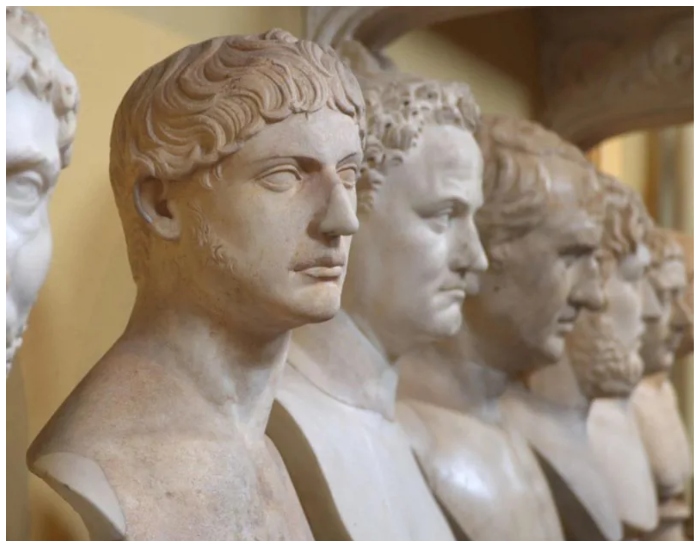
Many emperors lived short lives, so they would leave before anyone could finish building the body. Instead, they would reuse the same body but only swap the marble head. Caligula’s head was actually not preserved and was replaced by his uncle.
Mock battles were a major event for those living in Rome
Caesar wanted the public to be on his side. This is why he created the mock sea battle, the Naumachia. It occurred in 46 BC and featured a man-made lake that attracted people from all over Italy. Two senators were actually crushed by the crowd.
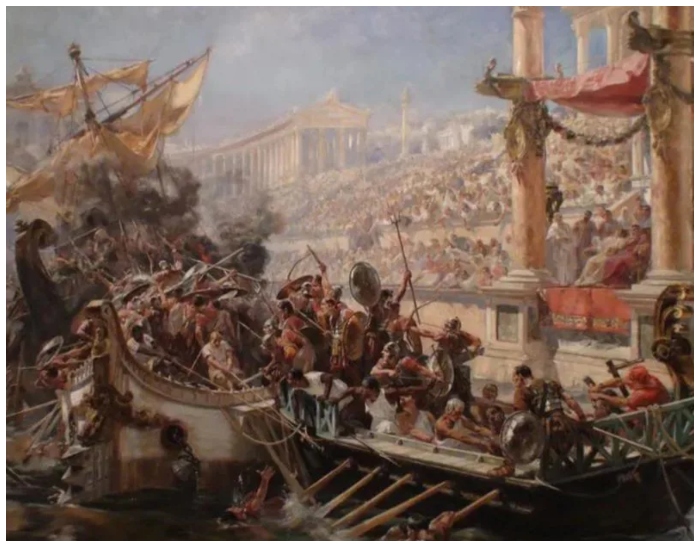
Four thousand oarsmen took to the water and 1,000 fighters each, while most were sentenced to death before the fight. Amazingly, they were released if they survived. Claudius, the Roman emperor, recreated the mock battle at sea with thousands of ships and 19,000 fighters 100 years later. This was where they once again fought for their freedom.
Life in Rome meant worshiping several gods
Many people have spent many years studying the gods that Romans worshipped. Apollo, Mars, and Mercury are some of the most well-known gods. But they weren’t all they worshiped. The Romans believed that all things had a spirit or were protected by one. This included rivers and trees.
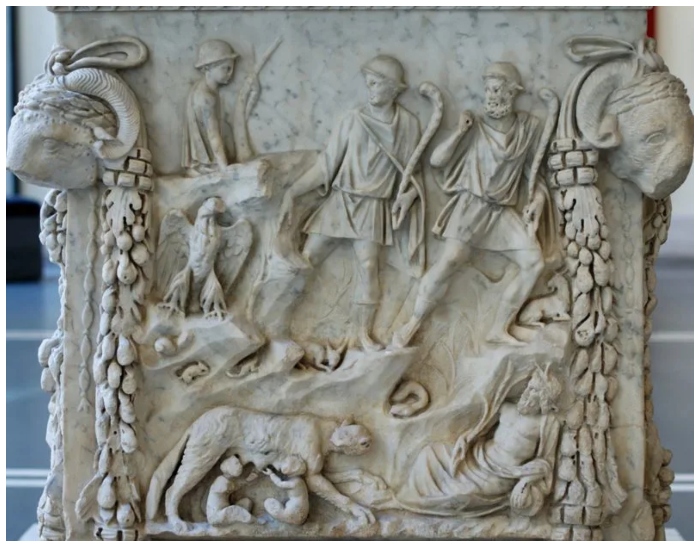
This meant that Ancient Romans believed their homes and properties were protected by a spirit. They created shrines to honor them. This was more than keeping the spirit happy. Many people used it to show off their wealth to the rest of the city. More significant shrines meant that someone had more money.
Praying in Rome was different from how many worships today
Religion has been an integral part of human history, even for those who lived in Rome. They believed they would pray to the spirits but didn’t know their gender. If they did, they could ignore them.
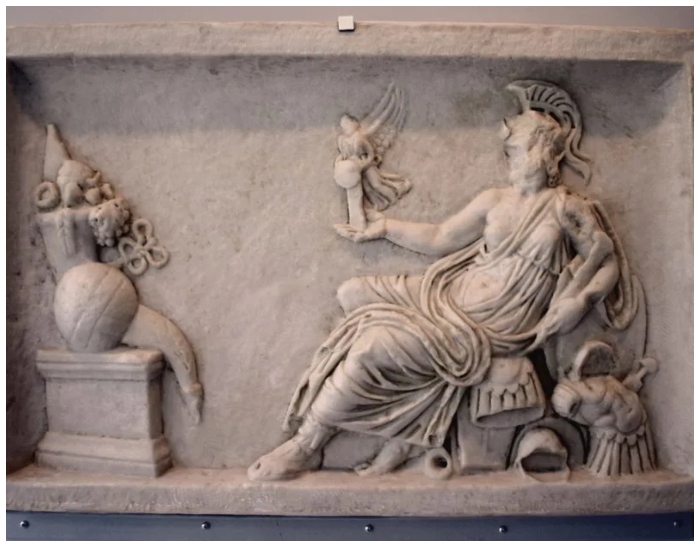
Many spirits required more than just a simple prayer. Farmers who wanted to cultivate the land had to sacrifice a pig. It was believed that this was a way to compensate for the damage done to the ground for crops. Romans looked for loopholes and covered all bases to ensure spirits were satisfied.
The Romans were known to adopt and import gods from others
Romans were well-known for taking over cities as they traveled the globe. However, this didn’t mean they forgot about the gods who looked after each city before arriving. It is believed that soldiers would instead pray to the gods of cities and ask them to join them in Rome once they have conquered an area.
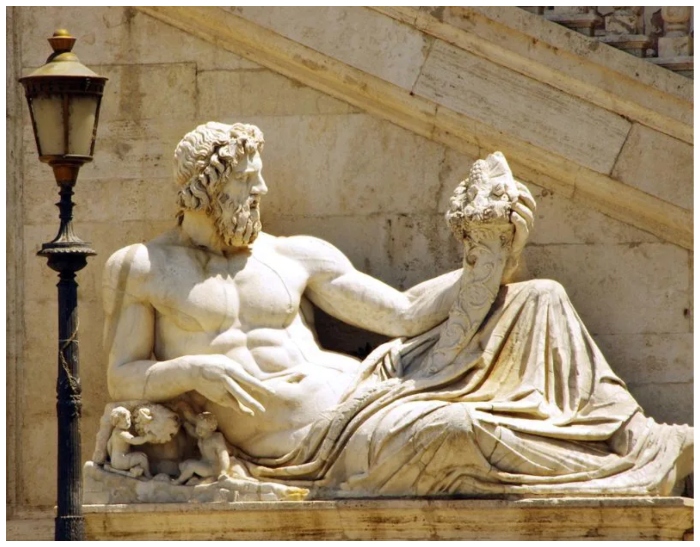
Cybele was one of many gods that they adopted. They called her “Magna Mateer,” aka “great mom,” and brought back a meteor stone. The streets were filled with incense and prayers. The day became a holiday, and games were organized in honor of the new goddess to welcome Cybele into the world.
The Cult of Cybele allegedly horrified Ancient Romans at first
Cybele is an imported goddess that Ancient Romans loved the most. But it wasn’t her fame that made her so special. The goddess was actually followed by the Cult of Cybele. In honor of Cybele, her followers were known for carrying feathered headdresses and brandishing their weapons. This was only the beginning.

Cult of Cybele also danced, crashed symbols, blew whistles, and honked horns to celebrate the goddess.
The Day of Blood might have been one of the most horrific aspects of the cult
Although the Cult Of Cybele was unknown to the Romans when they introduced the goddess of Rome to the people, they soon learned about the extraordinary lengths her followers would go to. It began by blessing and washing a bull and then placing them on a plank over a pit. It is believed that someone in white robes would cut off the bull’s throat and drain the blood into the pot.

The pot was then pushed onto the worshipper in the pit below as soon as the last drop of blood fell. The cult is believed to have even fetched blood onto altars, with the Galli taking out their private parts.
Workdays in Rome were particularly short compared to now
It doesn’t necessarily mean that life in Rome was always full of pleasantries. The workday was about having fun and getting things done rather than too busy. There were no clocks, so it was impossible to keep time. Instead, they would wake up to the sun at 6 AM and head for breakfast.
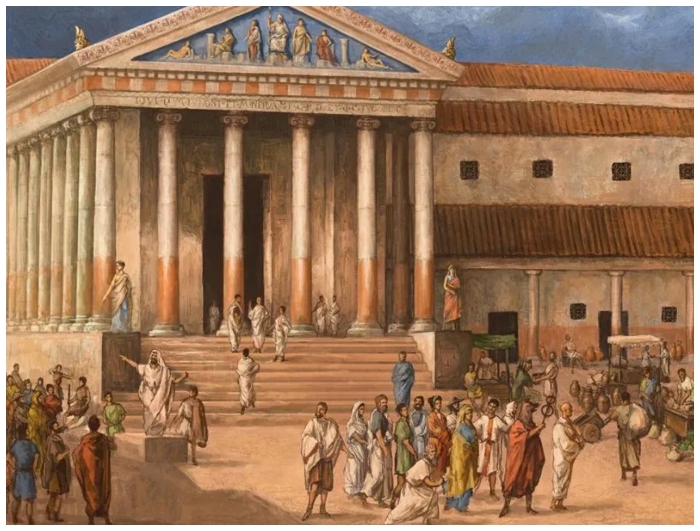
After being fed, workers would return to work until the late afternoon before heading to the Roman baths. The majority of the afternoon was spent at leisure, with only a handful of shops remaining open beyond a certain hour. It was mainly taverns, which stayed open as places to eat and drink.
The Romans were known to write their own joke books
Romans were known to enjoy having fun. Ancient Romans even had their own jokebook. The novel, called Philogelos (which means “The Laughter love”), was written around the 3rd to 4th centuries CE. It was written around the time of the fall of the Roman Empire.

Many people today have lost their sense of humor at a time when so many need it. They’re not the norm today, with jokes about someone having an intimate relationship with another man’s spouse, someone with bad breath, and one person being unable to wear pants because it was too tight.
Rome created a mountain of trash made from olive oil jars
Olive oil is the one thing that kept Rome nourished. The Ancient Romans ate so much olive oil that they soon ran out of pots. It was imported from all over the globe, and they used it in their baths, perfumes, and lamps. It arrived in large terracotta containers.

The jars could not be reused because the oil would go rancid. What were they to do with five-foot-tall jars? Place them in a heap. Monte Testaccio, which means “broken pot mountain,” still stands today. It’s 45 feet underground and 150 feet tall. It’s filled with 25-80 million broken pots dating back centuries.
People living in Rome told tales of a mythical sewer octopus
Urban legends are not a new phenomenon. They have been around for thousands and years, just like the ones that kept Ancient Rome on its toes. A writer named Aelian first described a giant octopus that ruled Pozzuoli. Evidently, the creature became bored with the food in the sea.
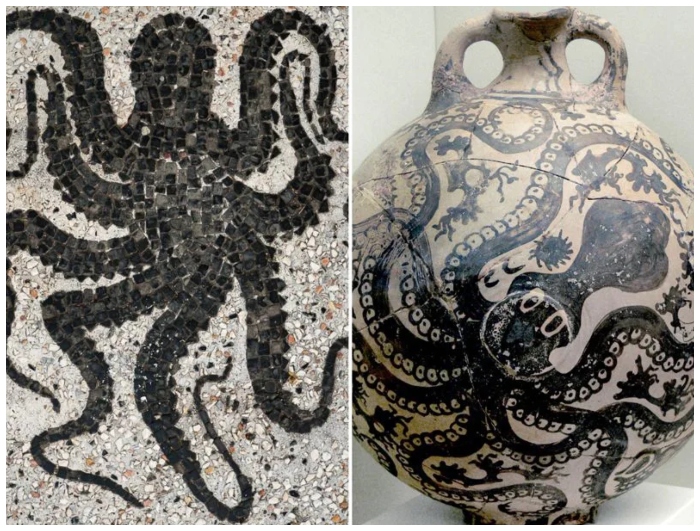
It was on a quest for food and found it in Rome’s sewers. The octopus’ size meant that it was too large to handle, so it had to be taken down by several people.
Doctors in Rome were untrained, and there were no hospitals
You would not likely find medical care in Rome if you had a severe injury. It’s true. The only thing that looked mildly like hospitals were the tents on the battlefield where wounded soldiers could be taken to rest. This meant that those in Rome had to depend on doctors, which was something anyone could do if they wanted.

Nevertheless, many avoided it because doctors were often looked down upon by Romans. Doctors were trained by learning from others who claimed to be doctors. Success actually means you could end the patient’s life – but you didn’t. Romans did not allow autopsies. This meant they didn’t know anything about human body anatomy.
Healthcare workers had unusual ways of curing bruises in Rome
Let’s face the facts; most people have suffered from a bruise at some point in their lives. They were still more common in Ancient Rome because of the constant fighting for your place on overcrowded streets and bar fights. What’s the solution? Wild boar. It was an unusual treatment that was very popular with doctors in Rome.

They would then instruct people to use the dried droppings of the animal and smear them on the bruise. This could be soaked in vinegar to give it a stronger sting. Fresh droppings were often on the menu for chariot drivers, who most likely had their hands cut when they needed medical attention.
Inflation meant wages were low and prices were constantly high
Many of us have discovered that wages tend to rise while prices increase. People living in Rome believed this was true. A pair of boots would cost 120 denarii. While currency fluctuated throughout the Roman Empire’s history, Diocletian, the Emperor, knew that inflation was out of control.

He set a maximum price for goods to stop them from getting out of control. However, it did not help. Farmers and mule drivers earned as low as 25 denarii per day, while wall painters earned as high as 75 denarii. Even though they included meals, some people would have to work five days to afford boots.
A law once meant no one in Rome was allowed to wear pants
Why are there so many statues in Rome with people in no pants? It could be because of the empire’s hate for other cultures like the Persians and the Gauls. The Romans were not afraid to support their enemies, as they were well-known for wearing pants. In 399 CE, things took a new direction.

Rome’s people wore pants more often until a law was passed banning them entirely. It was a law that anyone found wearing pants would be exiled. But it didn’t last very long. Rome was already in decline, so it wasn’t long before the Visigoths seized power and brought back pants.
Life in Rome was filled with imported goods from around the world
Rome was a city that grew faster than any other. Soon, there were more people to care for. The town began to import almost everything possible, including wood, salt, and pigs. Each country in the Mediterranean offered Rome something different.
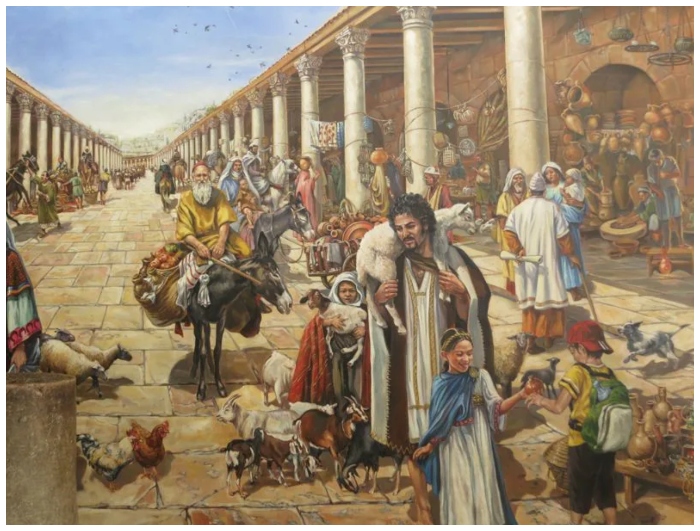
It was a lot of work to obtain everything. However, Rome offered a wealth of exotic wonders from all over the globe that Romeites couldn’t miss. This didn’t necessarily mean that everyone could have everything. People still had to be able to afford the privilege of importing goods.
Ancient Romans had unusual ways of washing their clothes
Although public bathrooms are large and socially acceptable, they are not easily accessible in every part of the city. People needed other options to use between going to public offerings. To collect certain passings, chamber pots were invented. It was also used to wash laundry detergents at the laundry store.
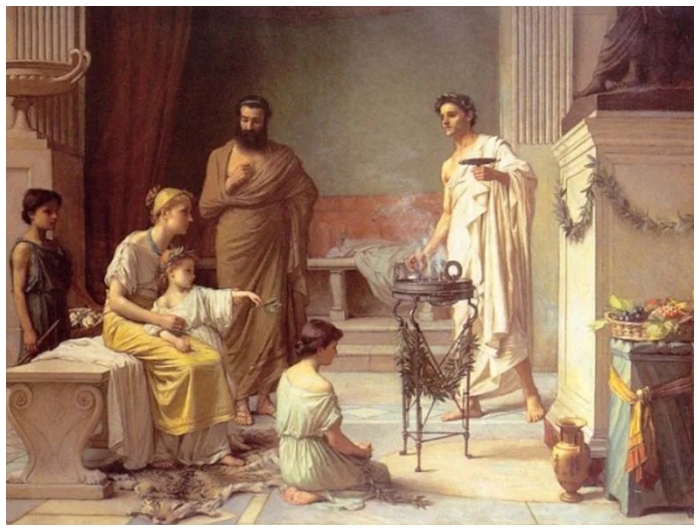
The chamber pot collection was mixed with water; people wore their clothes and walked around the area with their naked feet. After removing the dirt, clothes were washed in water and dried. Amazingly, the passing is a laundry detergent that contains ammonia. Romans had whiter togas because of this unusual laundry detergent.
Roman enslaved people had some power but not always
While many people forget that Romans used slaves, that doesn’t necessarily mean everyone lived a miserable life. Slave owners were often buried in the “familia” word with their family members. Many of them had some power, like the slave of Emperor Caligula.

According to legend, he was carrying two huge scrolls with the words “sword” or “dagger” on them. Also included was a list of Caligula’s victims and their names. However, not all enslaved people had power. Many abused, assaulted and tortured their slaves. They could also end your life without warning.
It was common for Roman slaves to face unthinkable punishments
It was a terrible experience to be enslaved in Rome, regardless of who the owner was. While those working for landowners spent hours doing backbreaking work, those who owned the city were responsible for building public buildings. Things got worse when slaves were tortured before being questioned.

All slaves would be tortured if a master died. All of their lives would be ended if one were found guilty. Emperor Augustus loved to throw them in a pool with eels to end their lives. Things changed only after Hadrian banned the sale of slaves or ended their lives.
Slaves could earn their freedom or be released by their masters
Things might not have been so bad for the enslaved Romans living in Ancient Rome. They could be freed by their masters or earn their freedom if they were fortunate. The formerly enslaved were considered full Roman citizens once they were released.
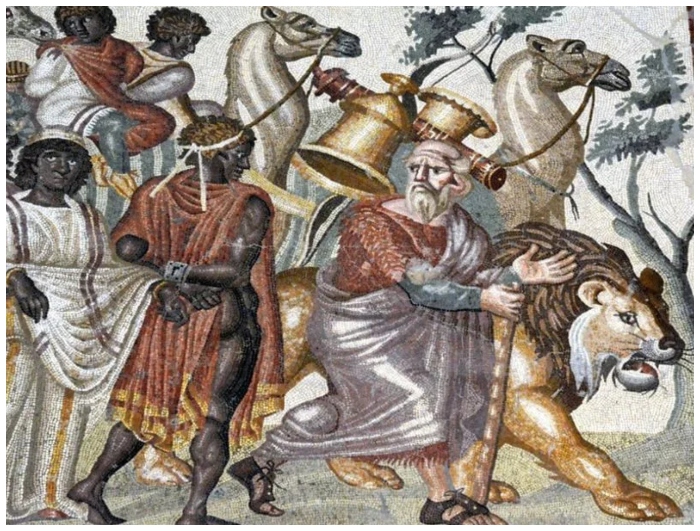
It was even common for some to invest in slaves from other countries, then bring them home and release them as citizens of Rome. One tale tells of a man who bought a slave and made her his wife. Amazingly, slaves could purchase their freedom if they were given enough money.
Branding items was a common part of life in Rome
It’s very common to mark something you’ve made with your name or mark. This is not a new concept. In Rome, people used to brand products before they were sold. The bread was the most popularly branded item. Each loaf had to be exactly as advertised.

Other items, like pottery and glass, were also branded. Umbricius Scaurus is one of the most well-known branders. He was a Pompeiian and could have had one-third of the global fish sauce market at one time. That could be why he branded each bottle he made before it was distributed around the globe.
Early Rome saw people paid in grain all at once
The pay in the form of grain was one of the greatest draws to becoming a full Roman citizen. According to some estimates, 200,000 Romans were paid between 75 and 90 pounds each month. This was enough to make enough bread for two people. Problem? It was all paid at once.

This meant that citizens needed to find a way for their grain to be stored, ground, and baked to make bread. It was challenging to do this across the city. Most likely, each shipment of grain arrived in Ostia, where it was then sent to distribution centers. They had to rely upon bakers because Roman homes had no ovens.
Being a baker played a big paying role in Ancient Rome
Romans had to be able to bake all the grain that came into Rome each month. They couldn’t afford ovens, so they turned to bread bakers. They could also make a good living.

Eurysaces, one of the most well-known Roman bakers, built a luxurious tomb for himself when the time was right. This is one of many unusual things. It turns out that Eurysaces was once a slave before he was liberated and found a new career as a baker.
Food was a little different for those living in Rome
Rome is part of Italy, but it’s not all sun and heat. Today, the area is well-known for its fantastic ski runs. This snow was once used to aid wealthy Romans. They would bring down snow from the mountains and use it for cooling their drinks.

As if this wasn’t enough, sweet and savory foods were almost identical in Rome. Most meats were mixed with fruits. The most popular food in Rome was eggs. Poor people ate sheep’s lips and grain, and people with more money enjoyed delicacies like peacocks and pig’s stomachs.
Private Roman banquets were a lavish affair
Ancient Rome’s wealthy were known for showing off their wealth to all. This was achieved by hosting lavish banquets and inviting rich friends. This was a place to do business, eat, drink, and be entertained by various additional additions.

There were often at least three couches made from ivory and gold that were placed in a U-shape around a dining table. You could also find luxury cutlery, drinking vessels, or Roman glass set around the table. All of it was meant to be extravagant.
Ancient Roman banquets often followed the same structure
For the rich people of Rome, throwing a dinner party was not enough. They became whole events with similar structures. They ate at least three meals a day that included the best and most expensive food money could buy. Even the guests ate in specific ways.
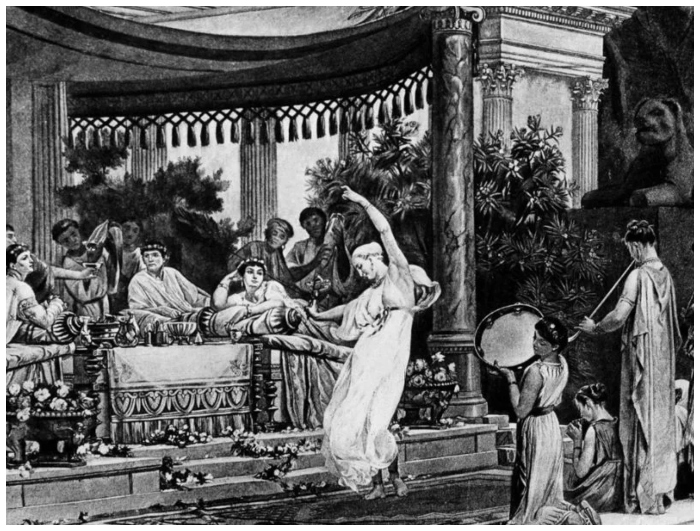
Everyone sat down while eating and had water bowls at the table to dip their fingers in between bites. Entertainment? Gladiators, acrobats, and musical performances were responsible for the entertainment. Amazingly, even the chefs sang songs while they prepared the food. Live bears and lions were often seen at grand events.
Roman emperors were known to keep bears and lions as pets
Roman history was full of eccentric emperors. They were the ones who adored showing off their wealth and put in place all sorts of bizarre laws. They also love to have exotic pets. Bears and lions were two of the most popular and rarest pets.
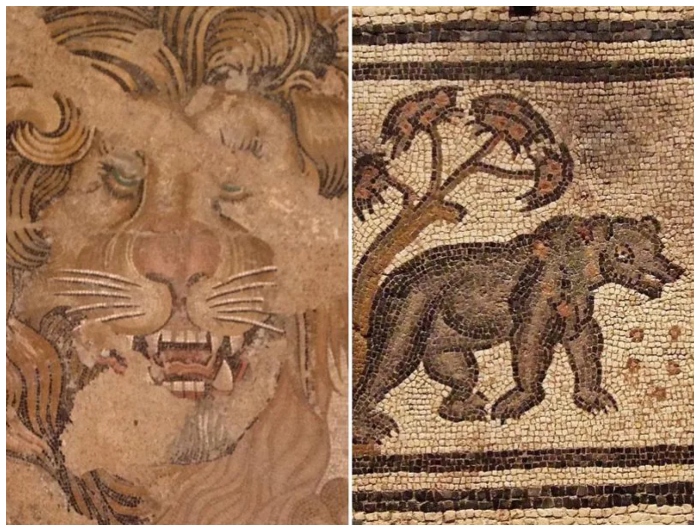
One of the most eccentric rulers was Emperor Elagabalus. Elagabalus was only 14 when he gathered the city’s women for his parties. Elagabalus was said to have instructed his guests to follow his instructions and that they could do whatever they wanted with his additions.
Saturnalia saw the tables turn for slaves and their masters for a time
Having parties was not something that wealthy people could afford. Many people in Ancient Rome enjoyed having fun, and Saturnalia was one of the most important events on the calendar. The event took place on December 17 and was held for several days. Stores and businesses were closed to let everyone enjoy the public banquets.
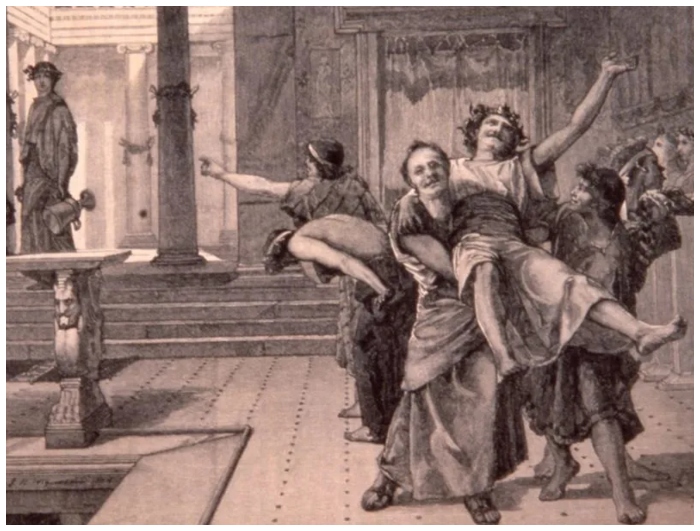
Saturnalia was also a way for slaves and enslavers to swap places. The owners would give their slaves gifts, and they would talk and gamble with each other. The masters would serve their slaves meals and drinks. However, things would return to normal after Saturnalia ended for the year.
Bars were a common site for those living in Rome
Pompeii is a great example of Rome’s life after the catastrophic volcanic eruption. Archeologists discovered 120 bars in this area. Roman bars were open to all who wanted to eat and drink in the streets.
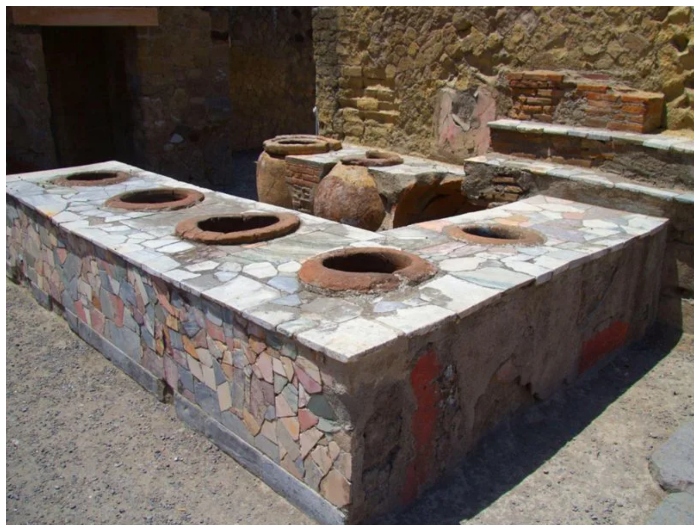
Some of these drinks were stronger than those available today, so they needed diluted. Romans loved heating it up. No matter what, enjoying food and drink at a bar was much more enjoyable than trying to squeeze people into high-rise apartments.
Creating the best Roman Games was a balancing act that could see crowds turn
If there was one thing that emperors desired, it was to keep the people on their side. It is possible to end someone’s life by upsetting others in Rome. Editors were the people responsible for organizing the Roman Games. General Pompey, the great general, was an example of someone who could have made things go wrong.

The editor decided to bring 17 to 20 elephants to the games. They were then brought out one at a time. What was the problem? The problem? After the disastrous Roman Games, Pompey’s crowd turned on him, and they could be heard crying.
The gladiator games were filled with theatrics to wow the crowd
The Roman Games were designed to entertain the crowd. They all used the same structure. For example, they started the day with animal fights. It could be animals fighting other animals or even people. It didn’t matter what the case was, people, lost their lives in public at noon. Gladiatorial fights closed the event.

These were spiced up with underground trap doors and lifts, allowing exotic animals to be brought into the stadium. It was made to look like they came from far away. Sometimes, people would distract the animal from being placed. The Roman Games were primarily about entertainment for the masses.
Rome was filled with giant adverts for the gladiator games
Advertisements for the most popular TV shows and movies are often a common way to spend millions. It might surprise you how many Roman Games were advertised throughout Rome. Wall murals would be a great way to impress an editor or emperor.
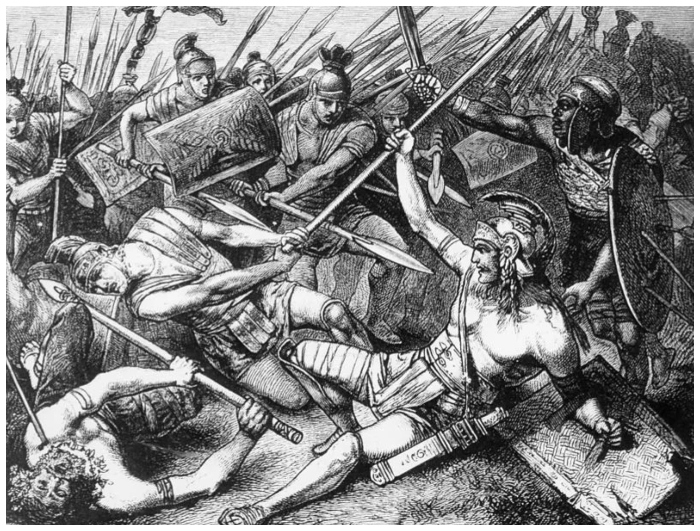
Handouts were distributed throughout the city to encourage people to participate in the games. Emperor Augustus allegedly used live crocodiles with handlers in an enclosure to promote the games. The night before, there was a lavish feast for gladiators and the general public.
Gladiator armor used in the games was mostly for the show
Did you know that gladiators came in many different forms? It’s true; there were about two dozen gladiators who each had their own armor and weapons that they used in the stadium. However, this didn’t necessarily mean that they were based on actual armor from the battlefield. Gladiators mostly wore stage armor, which was used only in games.

The armor is believed to have been designed to encourage gladiators to fight while keeping things fair. It also makes it more entertaining for the spectators. It wasn’t only for the show. Although bronze and leather effectively protected gladiators, they weren’t as strong or durable as the Roman Army’s armor.
Gladiators were trained in how to lose their lives during Roman games
Gladiators were known for keeping the crowds happy and winning. Although they did not permanently lose their lives, it was possible. Gladiator school taught them how to deal with the last blow and how it should be taken.
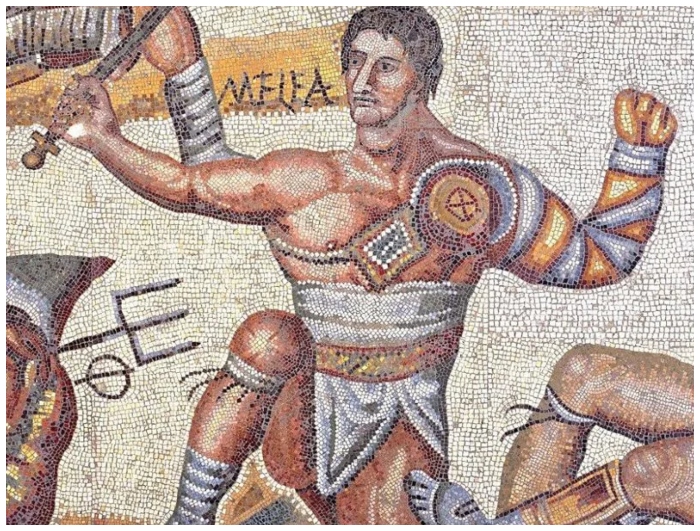
According to some, gladiators would wait for the weapon to penetrate their hearts and tense up. Amazingly, only 19 gladiators would die in 1000 fights. This number rose to 25% by the time the 2nd and third centuries arrived.
Serious crimes could see someone thrown into the arena in Rome
The Roman Games included a midday procession that saw people lose their lives. This meant they had to have a steady supply of people to sustain this section of the day. They were fortunate that Ancient Rome was full of people who broke the rules. However, the worst offenders weren’t allowed to participate in the event.
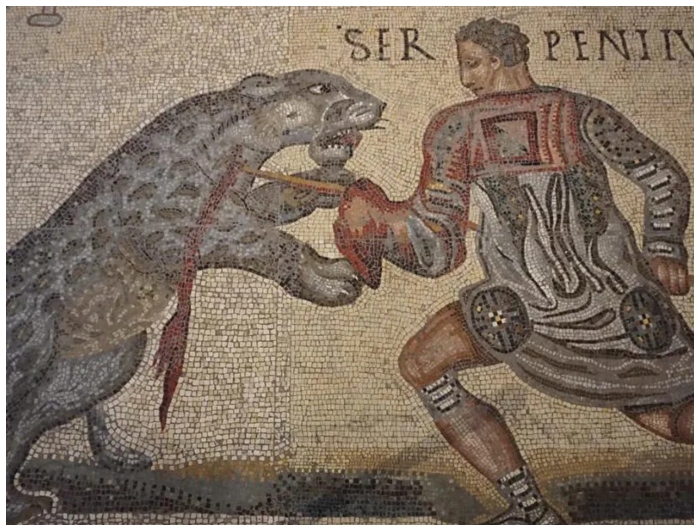
They were instead reserved for Damnatio ad bestias. This is when you risk your life to save a wild animal. It was still expensive. Instead, most of those in this day’s section, who often killed others, were forced to enter the arena to face fully-trained gladiators. They were often unarmed, and they could be freed if they survived.
Gladiators were forced to give up their freedom to fight
A gladiator was usually someone famous in Rome. If they were fortunate enough to be able to write poems or stories about them, these gladiators often became part of murals. Problem? The problem?
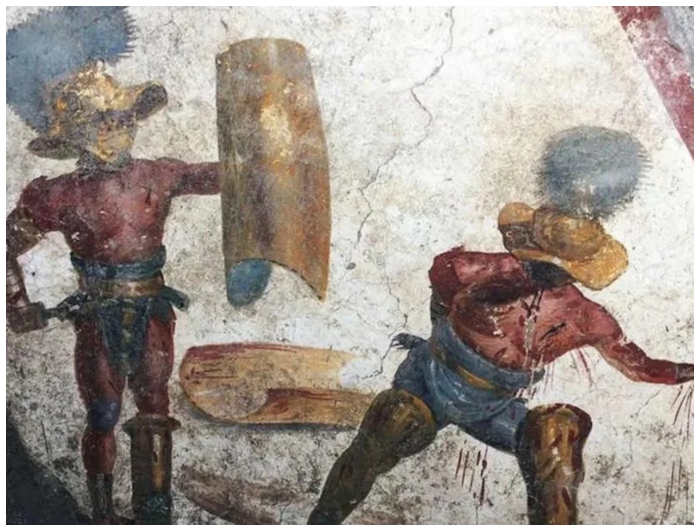
Gladiators were also forced to give up their freedom. They were told where to go, what to eat and what to do. Gladiators were often social outcasts and former slaves. Many gladiators refused to accept their wages to preserve their dignity and regain some social status.
Most people didn’t want to be a gladiator during Ancient Roman times
Gladiators are a famous aspect of Ancient Roman times and are still celebrated as legends. Due to the strict schedules and lack of freedom, many people still make gladiators a popular choice. It led to gladiators trying to escape.
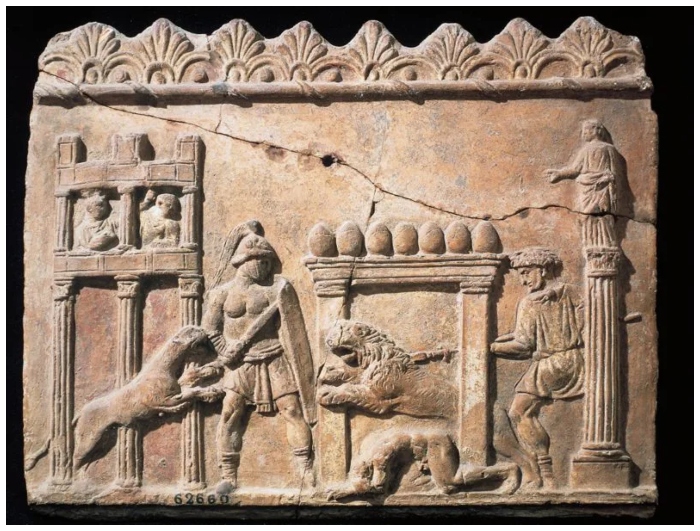
Many tried to end their lives or run away. Gladiators were kept safe at all times, except for the bathroom. It was here, apparently, that one attempted to end his own existence. He reportedly took the communal toilet sponge and stuffed it into his throat until death. Many praised the bravery of the gladiator.
Female gladiators weren’t entirely unheard of in Rome
Ancient Rome was dominated by men who were gladiators. However, it didn’t necessarily mean that men could only perform as gladiators in Ancient Rome. There are records of female gladiators throughout history. One of the Roman Games featured an example of a woman killing a lion in one of Caesar’s games.

Emperor Domitian may have had female gladiators. The editor ordered some women to fight each other by torchlight as part of his show. All that changed when the emperor Septimus Severus decreed that no female gladiators could enter the arena from 193 CE to 211 CE.
The thumbs-down part of the games might have been real after all
“Gladiator,” a historical drama epic, brought Roman times back to life on the big screen. It became a classic. The best part is the famous scene in which the Emperor orders gladiators to give a thumbs up or down. It begs the question: Was it real?
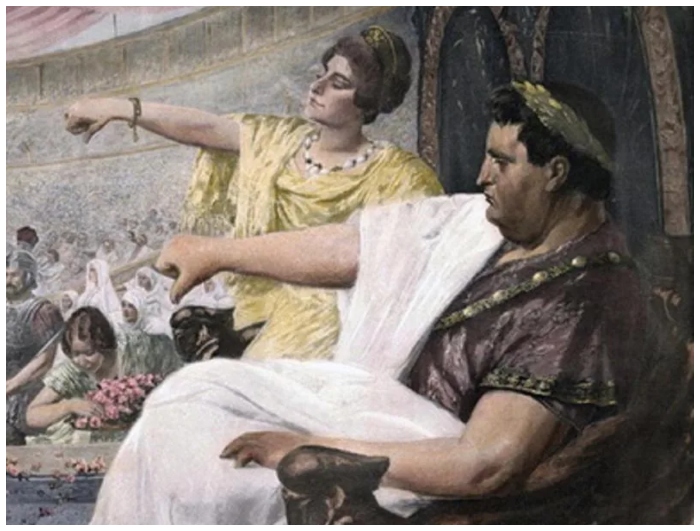
This has been debated for a long time, and people now believe it was part of the games. According to legend, gladiators would raise their fingers if they asked for mercy. The three referees then stopped the game while they decided. The crowd would cheer for the outcome. A thumbs up meant the opposite, and two fingers would signify someone was spared.
Running the Roman games was hugely expensive for emperors
One of the most well-known of all is Emperor Caesar. It seems that his hosting of the Roman Games was what made him famous. According to legend, the ruler would attend rallies and excite crowds with his promises of great things from the games.

He had to deliver. One game saw 320 gladiators wearing silver armor fighting simultaneously. Importing exotic animals, often from Africa, for the games was another costly aspect. Caesar was millions in debt because he spent so much on games to make himself emperor.
Walking the streets in Rome was a pretty dangerous affair
Because there were so many apartments in a small area, it didn’t take long for the streets to become smaller throughout Rome. It was important for people to keep an eye on what was happening around them and also look up at the sky. Unlucky people could lose their lives due to falling roof tiles.

People had to be careful about emptying chamber pots, as they did not want a strange stench every day. Even worse, it was common for people to be crushed in large crowds. Walking through Rome was dangerous regardless of the circumstances.
Emperor Nero didn’t help make Roman streets any safer
It turned out that the chamber pots and crowds were not the only things to avoid when walking on Ancient Roman streets. Nero, the Emperor, was another. Because of the danger of thieves, many people avoided going out at night. Nero would still allegedly hide in shops and sell everything he had stolen from his home.
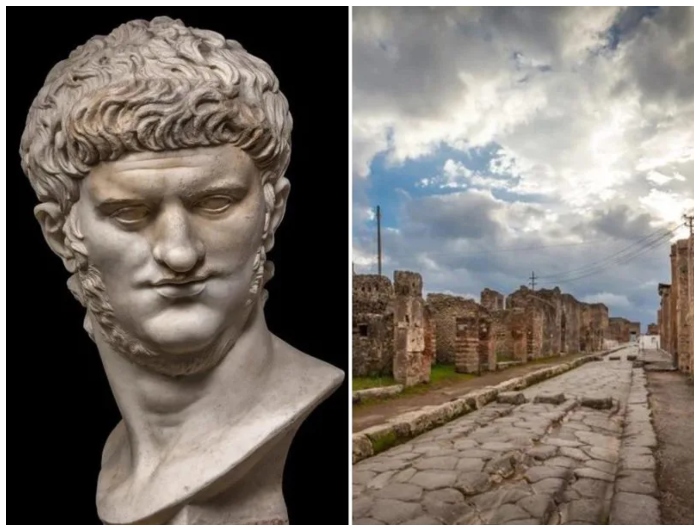
Nero would also be said to have fought anyone who crossed his path before throwing their bodies in the local sewers. Nero met a senator, and his reign of terror ended. Nero allegedly grabbed his wife, and the senator put the disguised emperor in his place.
Firefighters had to double up as night watchmen to replace the lack of police
It was because there were not enough police officers that Rome had so many criminals. They relied instead on others to keep mobs at bay and maintain a certain peace in the city. Only the Vigiles, also known as firefighters, had any form of policing presence.

They doubled up as nightwatchmen, but there were so few that it meant there wasn’t anyone enforcing Rome’s laws. However, this didn’t mean that everyone could do what they wanted. Romans were social people who learned to get along with one another without any problems.
It was common for vigilantes to take matters into their own hands
In Roman times, it was up to the victim’s family to find the culprit if someone took someone else’s life. It was usually a matter of ending someone’s life, which was acceptable unless they were in a higher social class. It was impossible to hurt someone more important.

This was true until a court system was established in the late Roman period. People could not accuse others more powerful than they were of their crimes. However, they had to hire a lawyer. Most of the time, those who are wealthier than the others would hire a better lawyer or pay the judge to walk away free.
Punishments were mainly kept for the poor across Ancient Rome
Rome didn’t have police, but that didn’t mean Rome was free to do whatever it wanted. There were strict rules everyone had to follow. They were mainly aimed at the poorer residents of the city. As they did more for society, the punishments were usually less severe for those at the top.
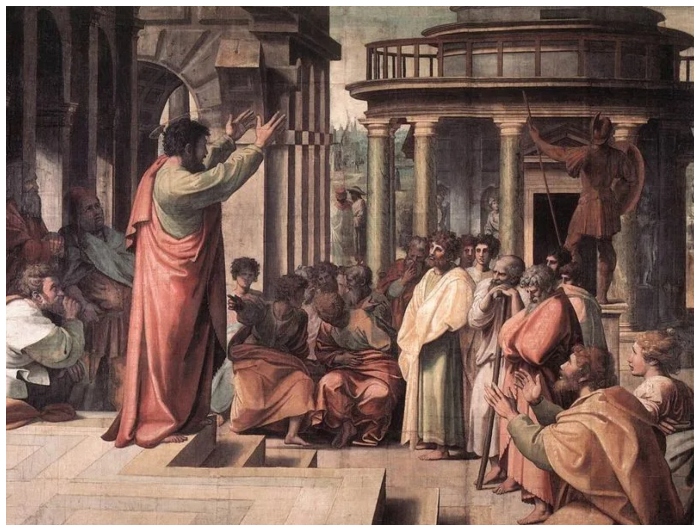
Those lower down? They were often sent to the mines and would eventually die. Even though crucifixion was common in Roman times, it wasn’t usually given to citizens. This was typical for those outside the Roman Empire, such as the people who captured Julius Caesar just before he became emperor.
“Punishment of the sack” might have been the worst punishment of them all
Rome considered the Crucifixion to be the final punishment. There was another alternative that could have been worse. Poena Cullei was also known as “punishment in the sack” and was reserved for serious offenders. It all began with someone being bound to their feet and hands.
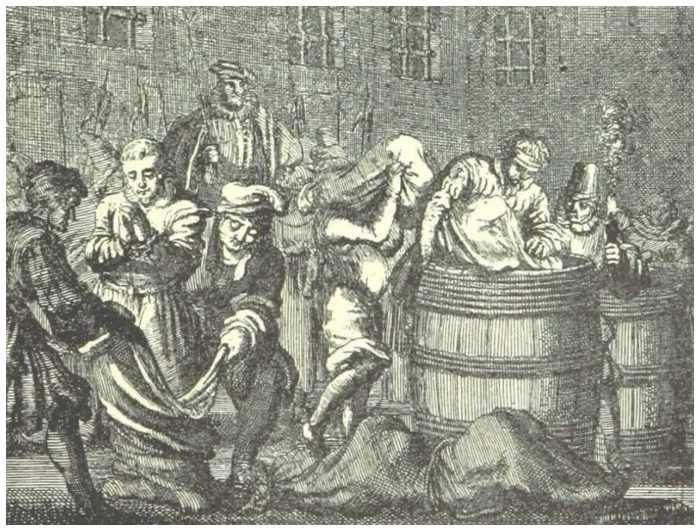
Then, the people were put into a leather bag before a monkey, snake, rooster, and dog were added. The sack was then sealed and thrown into a body of water. The punishment was reserved for those who killed their family members, but the fighting animals would do it.